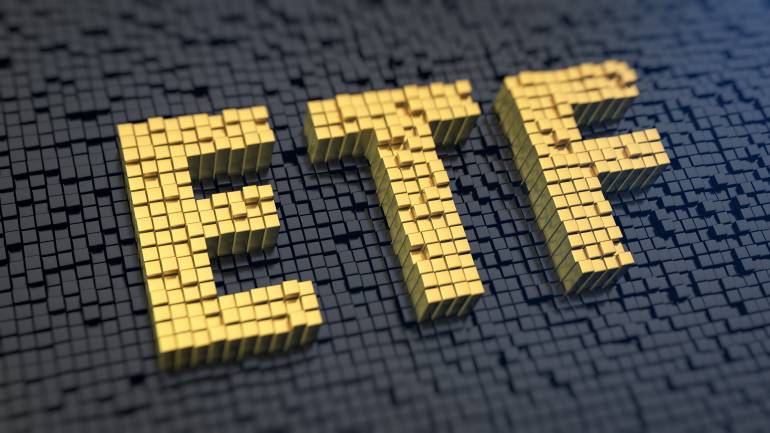Compared to gold, all equity fund categories have delivered negative average returns in the last one year
The yield from gold funds offered by mutual fund houses has touched 27.65 percent in the 12 months ending August 23, outperforming equity and debt fund categories, according to data on Value Research, a mutual fund tracking firm.
Gold has a negative relationship with equity. In times of volatility or crisis in the stock markets, gold as an investment performs better than equity.
Present volatility and uncertainty in other asset classes have prompted investors to turn to the stable asset class — gold — which holds good in turbulent times. In the last one year, Sensex has fallen a little over 8 percent.
“The credit events or crises in debt and higher volatility in equities have prompted investors to turn towards stable investments like gold,” said a fund manager from a bank-sponsored fund house.
Compared to gold, all equity fund categories have delivered negative average returns in the last one year.
Equity funds
Small equity funds have been the worst performers across all categories. This category delivered negative 18.76 percent returns in the last one year period. In the same period, debt funds have given returns in the range of 0.36 percent to 19.37 percent.
Some fund managers said investors are also diversifying their investments into gold schemes, expecting stable returns.
"Since gold has a very strong negative relationship with equity markets, it makes sense to have some 5-10 percent exposure in gold ETFs or other investment products as a hedge," a fund manager from a private fund house said.
He said investors are looking to hold the yellow metal via exchange-traded funds (ETFs) funds, rather than going for physical ownership.
Gold prices have seen an upsurge, riding expectations of monetary policy easing from major central banks to shore up the sagging global economy. Escalating tensions in the Middle East have also added to the safe-haven appeal of gold.
Gold prices have witnessed an uptick in the last one year. In August last year, Mumbai spot bullion was hovering around Rs 29,825/10 gms compared with Rs 38,810/10 gms on August 28, 2019.
So far this year, gold prices are up 20 percent.
Assets managed by gold exchange-traded funds rose to Rs 5,079.22 crore in the first four months of the current fiscal, a period during which the stock market dropped 3 percent, and investors turned to the yellow metal amid economic headwinds.
Data from Morningstar showed that assets under management (AUM) of gold ETFs have been rising since April this year.
"The US-China trade war, with new tariff announcements, has pushed gold high as investors rushed for safe-haven assets,” Pritam Kumar Patnaik, Head (Commodities), Reliance Commodities.
He added that the depreciating Indian rupee has also helped gold prices escalate.
Gold ETFs are passive investment instruments that are based on price movements and investments in the metal, offering the convenience of parking money in gold without the burden of its physical ownership. Due to its negative relationship with equity, it is the choice instrument for hedging.
According to fund managers, the appetite for gold ETFs would jump amidst the volatility and also because of the convenience to buy units of gold.
Gold Price Outlook
Gold ETFs seek to provide returns that closely correspond with those provided by holding physical gold.
Fund managers say the gold ETF is the best way to hold the precious metal as these funds track gold prices. Feeder funds invest in units of overseas gold funds, which in turn deploy corpus in shares of companies engaged in the gold mining business.
So, along with gold price movements, feeder funds are also exposed to fluctuations in share prices.
Experts say gold prices will continue to rise on the back of geopolitical risks such as the US-Iran tensions and the US-China trade war, and expect it to touch $1500/ounce.
Patnaik expects the current upward trend to continue for gold and silver.
“On the MCX, gold is likely to move towards 39,900 to 40,000 levels. Having said that, 38,800 and 39,000 act as a strong crucial support level for gold on the downside,” he said.
How gold ETF works
Overall, Indians have always been one of the biggest consumers of gold. Some invest in mutual funds that invest in gold, and some prefer to invest in sovereign gold bonds.
Since gold in the paper form, such as a gold mutual fund or exchange-traded fund, is available throughout the year, it becomes a matter of convenience for individual investors to stagger their investments.
Gold mutual funds are of two types – gold exchange-traded funds (ETF) and gold savings funds. As the name suggests, gold ETFs are mutual fund schemes that invest in gold and are listed on the stock exchanges. These are passively-managed funds — the fund manager’s role is limited to buying bullion gold of 99.5 purity and keeping it with the scheme’s custodian.
This is done to mimic the price performance of the physical form of gold. Put simply, gold ETFs are expected to offer returns similar to that offered by physical gold, before scheme expenses and tracking error. Lower the tracking error, better it is for the investor.
An investor can purchase and sell units of a gold ETF on the stock exchange. He/she, however, needs a demat account to purchase the units of gold ETF.
A gold ETF negates the need to hold and store physical gold.
The expense ratio for these funds hover between 6 basis points to 1.82 percent. Note that this is over and above the costs charged by underlying gold ETF in which the gold savings fund invests.
Effective April 1, 2019, ETFs' maximum total expense ratio has been capped at 1 percent, whereas for the Fund of Funds the same is capped at 2 percent.
With multiple economic rationales for gold to play as a hedging role, ranging from the meltdown of equity prices to geopolitical risks to also being a hedge against currency volatility, gold as an asset class may always hold a place of its own in global portfolio allocations.Subscribe to Moneycontrol Pro and gain access to curated markets data, trading recommendations, equity analysis, investment ideas, insights from market gurus and much more. Get Moneycontrol PRO for 1 year at price of 3 months at 289. Use code FREEDOM.















